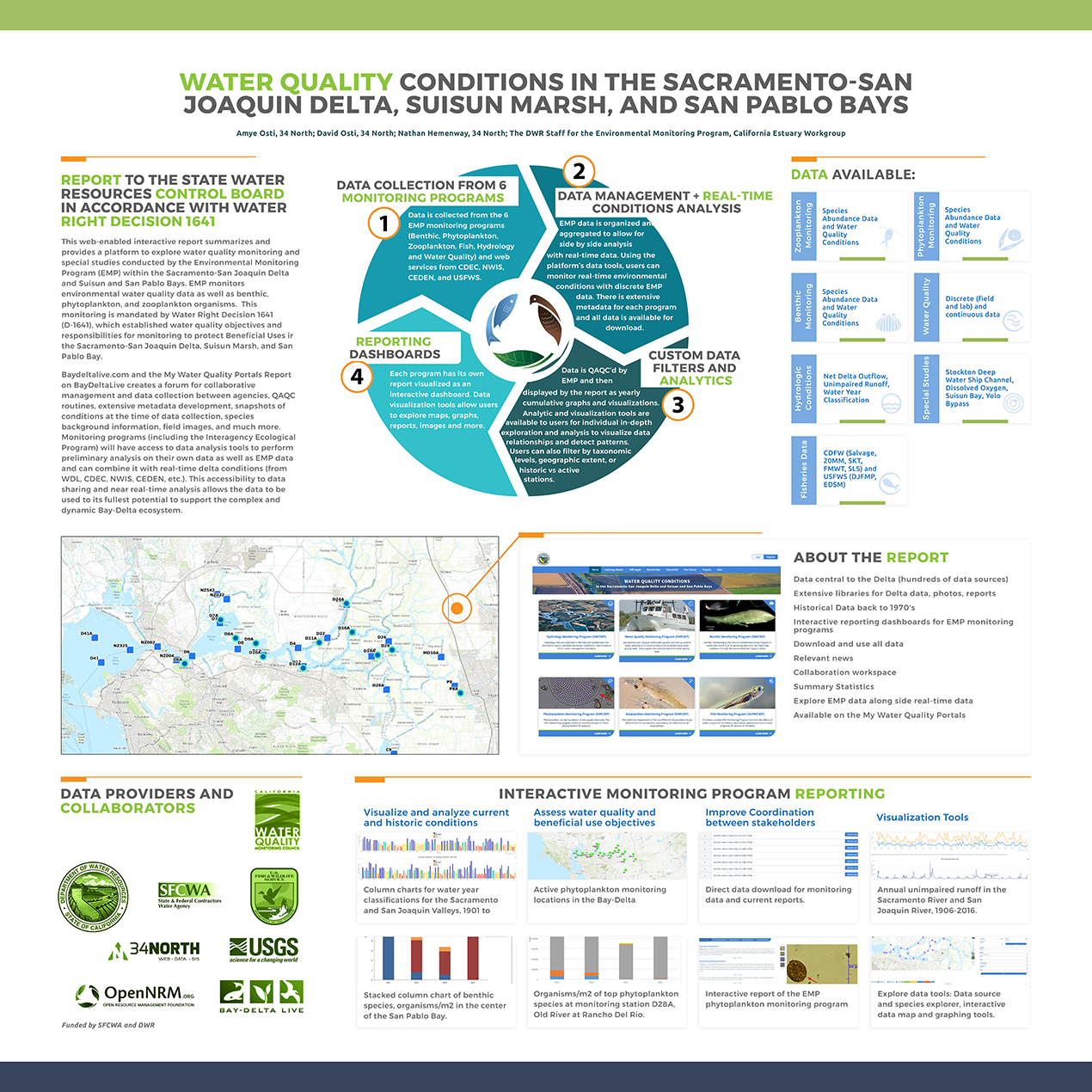California Estuaries Portal
Overview
California Estuaries Portal
The California Water Quality Monitoring Council (Monitoring Council) is unveiling its sixth My Water Quality internet portal to connect decision makers and the public with water quality and ecosystem health information. The theme of this new portal is “How Healthy Are California’s Estuaries?” View the new portal from California’s My Water Quality website, www.MyWaterQuality.ca.gov, under “Are Our Aquatic Ecosystems Healthy?”
The new California Estuaries Portal presents information on the health of California’s estuaries, with an initial emphasis on the San Francisco Estuary. The portal includes interactive maps and monitoring data that focus on key ecological attributes (or “Living Resources”) such as phytoplankton, zooplankton, benthic organisms, fish, and birds. The new California Estuaries Portal brings this information together in a single location and in an easy to understand manner for the public, environmental organizations, and water quality professionals. The goal is to make this information as timely and user-friendly as possible.
Why Are Estuaries Important?
Estuaries provide places for recreational activities, scientific study, and aesthetic enjoyment. Thousands of species of birds, mammals, fish, and other wildlife depend on estuarine habitats as places to live, feed, and reproduce. Estuaries also provide important commercial value; their resources provide economic benefits for tourism, fisheries, and recreational activities. They are an irreplaceable natural resource that must be managed carefully for the mutual benefit of all who enjoy and depend on them. The San Francisco Estuary is a source of drinking water for 22 million Californians and irrigation water for 4.5 million acres of farmland.
But the health of many California estuaries has declined. The San Francisco Estuary is plagued with rapidly declining fish populations, an invasion of non-native species, the collapse of California’s salmon fishing industry, and an imperiled aquatic food web. In addition, there are growing conflicts over the allocation and management of California’s limited fresh water supply and how flows of water through our estuaries affect the fish and other organisms that depend on them.





Why Was This New Tool Developed?
In 2006, the California legislature mandated coordination of water quality monitoring and assessment activities among organizations, both inside and outside California government, and delivery of this information to decision makers and the public via the internet. The Monitoring Council was formed for this purpose in 2007 by cooperative agreement between the California Environmental Protection Agency and the Natural Resources Agency. In 2009, the Monitoring Council released its first two internet portals, Is it Safe to Swim in Our Waters? and Is it Safe to Eat Fish and Shellfish from Our Waters? Additional portals feature the health of wetlands and stream and river resources. More portals are planned highlighting California’s drinking water resources and ocean ecosystems.
The Monitoring Council brings together water quality and ecosystem health information from a variety of organizations with special expertise and data relating to specific ecological attributes. The efforts in these specific areas were coordinated through the Estuary Monitoring Workgroup, which facilitates dialogue and coordination among 16 state, federal, and local agencies and non-governmental organizations that monitor and assess our state’s estuaries; the portal is a collaborative effort between the agencies and organizations involved, with decisions vetted by the Interagency Ecological Program (IEP). Portal development and data visualization was performed by 34 North, Inc. with funding from the State & Federal Contractors Water Agency (SFCWA).
The California Estuaries Portal is fundamental to furthering the discussions and understanding of ecosystem health and estuarine resources in a clear, scientific manner. It helps facilitate the dissemination of information generated through monitoring and research efforts to a variety of audiences, including the public, managers, and policy makers. Through the efforts of the California Estuary Monitoring Workgroup, there are increased opportunities to improve efficiencies in monitoring efforts, reduce redundancies, and improve coordination among member agency programs.

How Do I Get More Information?
More information about the Monitoring Council and its expert stakeholder work groups can be found at http://www.mywaterquality.ca.gov/monitoring_council/.







